Do you crave stable, smooth videos and photos? A camera gimbal or camera stabilizer could be your key to success.
The use of a camera gimbal allows you to obtain-shake free video and professional-looking results. Whether you’re into vlogging or documentary shooting, either of these tools will significantly increase the quality of your captures.
To help decide which model best suits your needs, we have collated the eleven best stabilizers and gimbals available, accounting for budget, size, and intended use. So join us as we take a look.
Here is a summary of the stabilizers and gimbals we are recommending. Scroll down to see the full review.
Top 11 Best Camera Gimbals and Stabilizers Reviews
SUTEFOTO S40 Handheld Camera Stabilizer

The best budget gimbal for action shooting and DSLRs
Weight: 2.2kg | Handles: 1 | Battery power: No | Recommended for DSLR, mirrorless cameras, action, and compact cameras | Max load: 3kg
With its elegant design and robust construction, the Sutefoto S40 Handheld Stabilizer is one of the best camera gimbals you can buy for under $100.
This stabilizer is suitable for any kind of camera, from a GoPro to a DSLR, and provides excellent support for up to 3kg of weight.
Built entirely from aluminum, the Sutefoto S40 is lightweight enough to be carried for extended periods. Plus with both low, high, and 360° Omni-directional shooting capabilities, you can easily change your perspective.
The number of removable counterweight disks at the bottom of the gimbal can be adjusted based on the size of your camera. When packed down, the SUTEFOTO S40 is less than 30cm tall, so you can take it anywhere and never miss any action.
DJI Osmo Mobile 3

A great, portable camera stabilizer for smartphones
Weight: 403g | Handles: 1 | Battery power: Yes | Recommended for: Smartphones | Max load: N/A
Extremely portable and functional, the DJI Osmo 3 is great if you film videos on your smartphone.
This tiny battery-powered mobile gimbal comes with a face-tracking feature and superb stabilization.
Designed for both beginners and more advanced users, the affordable Osmo is straightforward to use.
Whether you plan to use it for vlogging, interviews, or shooting hyperlapses, this foldable gimbal will not disappoint.
Editing is just as simple as shooting, thanks to the DJI Mimo app that helps you achieve great results. Available for both iOS and Android, the app connects the gimbal to the smartphone wirelessly, so you can change settings and start shooting without touching the screen.
Roxant Pro Video Camera Stabilizer

A budget-friendly stabilizer for DSLR and mirrorless cameras
Weight: 1.25kg | Handles: 1 | Battery power: No | Recommended for DSLR, mirrorless, and action cameras | Max load: 1kg
If you’re after a camera stabilizer for beginners that you can take on your travels, the Roxant Pro is a budget-friendly option worth considering.
Suitable for both heavy and lightweight cameras, this gimbal is extremely compact. You can throw it in your backpack without having to carry a separate bag for it.
The Roxant Pro provides stabilization thanks to three adjustable counterweights located in the lower part of the gimbal.
Thanks to its size, this stabilizer is particularly effective in tight spaces. Whether you are shooting in a car, a crowded bar, or in a narrow corridor, you’ll be able to capture smooth video effortlessly.
Neewer Carbon Fiber Handheld Stabilizer

An ultra-lightweight stabilizer with a comfortable grip and a modern design
Weight: 1.81kg | Handles: 1 | Battery power: No | Recommended for: DSLR and mirrorless cameras | Max load: 3kg
Affordable, versatile, and lightweight, the Neewer Carbon Fiber Handheld Stabilizer has gleaned some excellent reviews.
This handheld gimbal is ideal for those starting out in filmmaking; it will enhance their movies from day one.
It is made of carbon fiber and boasts a simple quick-release attachment system.
The joints are fluid and the rubber handle makes it very comfortable to hold, even if you are shooting for long hours.
The Neewer camera gimbal supports DSLRs with a weight of up to 3kg and can also be used with camcorders.
FLYCAM HD-3000

An affordable, mid-range, handheld steadycam for DSLRs
Weight: 4kg | Handles: 1 | Battery power: No | Recommended for: DSLR and mirrorless cameras | Max load: 3.5kg
A lighter and more accessible option is the FLYCAM HD-3000 handheld video stabilizer.
It can support cameras and lenses with a weight of up to 3.5kg and offers excellent stability. Even less-experienced users will find this gimbal straightforward, thanks to its simple design and quick set-up.
While robust and durable, the FLYCAM HD-3000 is compact and portable.
Its height can be adjusted when a more vertical balance is needed, allowing you to switch from 40cm to 60cm by unlocking the central post.
It is fairly affordable and lets you capture fluid motion shots, which add a cinematic feel to your videos. It is quite heavy to carry, however, and perhaps not ideal if you plan to shoot for extended periods of time.
FILMCITY Power DSLR Video Camera Cage Mount Rig

A robust, cage camera stabilizer for creative filmmakers
Weight: 2.9kg | Handles: 3 | Battery power: No | Recommended for: DSLR cameras | Max load: 3.5kg
The FILMCITY Power Cage Mount Rig differs from the other stabilizers on this list because of its design.
It is a robust cage capable of holding heavy cameras and accessories thanks to its solid 15mm aluminum rods.
Ideal for both professional and amateur filmmakers, this rig can be held with 3 different handles; 2 are on the side and 1 is on the top, useful to capture scenes from low angles.
The FILMCITY Power Rig is made from a plastic composite, which keeps the cost low but is strong and durable. And the quick-release plate lets you switch cameras in a matter of seconds.
Although this rig is bulkier than single-handle gimbals, it allows for more dynamic shooting from different perspectives.
Zhiyun Crane V2 Gimbal

A great, budget DSLR stabilizer that gives semi-professional results
Weight: 2.5kg | Handles: 1 | Battery power: Yes | Recommended for: DSLR cameras | Max load: 1.8kg
The Zhiyun Crane V2 offers a great compromise between price and quality.
If you are looking for a piece of gear that will provide semi-professional results without breaking the bank, this is the stabilizer for you.
The structure is very simple and designed to allow you to start shooting as soon as you take it out of the box.
The V2 has a quick-release plate and can be bought with double handles. Plus, it all fits into a professional, rigid carry case.
The V2 version has been improved from its predecessor and can support a weight of up to 1.8kg.
This camera gimbal is suitable for heavy DSLR cameras with hefty lenses attached. The minimum recommended weight, however, is 350g. If you have a more lightweight camera, however, the results may not be optimal and you may find a different stabilizer (such as the M model) better suited to your needs.
FeiyuTech AK2000 Dual-Handle Grip Kit

A great dual-handle camera stabilizer for mirrorless and DSLR cameras
Weight: 4.3kg | Handles: 2 | Battery power: Yes | Recommended for: DSLR and mirrorless cameras | Max load: 2.8kg
FeiyuTech’s AK2000 series aims to make video stabilization as easy as possible. Even an amateur video-maker can effortlessly produce professional-quality movies with this versatile stabilizer.
The FeiyuTech AK2000 Dual-Handle is compatible with all Canon or Nikon cameras, as well as most other DSLRs. It also allows for the connection of a variety of external accessories, including lights and microphones.
The AK2000 has a 3-axis stabilizer with a single or dual grip, offering maximum flexibility. You can customize its design to best suit your needs, and thanks to the innovative Smart Touch panel, you can also capture time-lapse photography by controlling the shutter via the handle.
Additionally, it offers 360° rotation on each axis to provide complete freedom of movement.
DJI Ronin-S V3 Stabilizer

One of the best single-handle, electronic DSLR gimbals
Weight: 1.85kg | Handles: 1 | Battery power: Yes | Recommended for DSLR and mirrorless cameras | Max load: 3.6kg
The Ronin-M by DJI is a gimbal with excellent stabilization features, similar to those of the Zhiyun.
However, one standout design specification is that the rear arm of the gimbal does not obstruct the front of the camera screen, allowing you to follow the action through live view with maximum clarity.
The maximum load capacity is 3.6kg, making it suitable for the heaviest cameras and lenses.
Ideal for both mirrorless and DSLR cameras, the Ronin-S can easily be controlled with just one hand. Thanks to its SmoothTrack technology you can transition from motion to camera angle without effort.
There is also a range of programmable modes for creating time-lapses, motion lapses, or panoramas. So you can let your creativity shine with spectacular video compositions.
Beholder DS1 Gimbal

A compact camera stabilizer with 360-degree rotation
Weight: 1.8kg | Handles: 1 | Battery power: Yes | Recommended for DSLR and mirrorless cameras | Max load: 2kg
The Beholder DS1 is one of the best handheld gimbals for mirrorless and DSLR cameras.
It can support cameras that weigh up to 2kg thanks to a compact and stable design. The 5-way joystick makes operation easy for both amateurs and serious enthusiasts.
Key features of the DS1 include the 360-degree rotation of the head and a quick-release plate that allows you to switch cameras easily.
The Beholder DS1 is also equipped with a pan and tilt control stick that lets you move the camera in any direction you wish.
MOZA Air 3-Axis Handheld Gimbal

A versatile, semi-professional gimbal that fits all cameras
Weight: 1.13kg | Handles: 1 or 2 | Battery power: Yes | Recommended for: DSLR and mirrorless cameras | Max load: 3.2kg
Designed to stabilize both DSLR and mirrorless cameras, the MOZA Air 3-Axis Handheld Gimbal is great if you want to shoot professional footage.
You can control settings directly from the handle with this gimbal. Plus it can rotate 360-degrees to give your video a great perspective.
The MOZA Air also comes with a dual-handle option, so you can choose whether you want more control over your video by holding it with 2 hands.
The Air can support cameras up to a weight of 3.2kg; ideal for most cameras, plus microphones and even basic lighting set-ups.
How to Choose the Best Camera Stabilizer?
To understand which camera stabilizer or gimbal best suits your needs, you need to consider certain factors. These include:
- Maximum load capacity;
- Number of axes;
- Number of handles;
- Stabilizer weight; and
- Electronic vs manual stabilizers.
So let’s take a look at what you need to consider.
Maximum Stabilizer Load Capacity
The first major factor to consider when choosing a gimbal is how much weight it can support.
Manufacturers tend to create different product lines for different users, and support weight will vary depending on the target audience.
There are stabilizers designed for smartphones, action cameras, small mirrorless cameras, and even bulky DSLRs.
Even if they look sturdy, it’s important to look at the technical specifications regarding load capacity. This is especially important when buying a motorized gimbal; if the motor isn’t powerful enough, it will not counterbalance the camera motion. This could lead to damage or even malfunction.
Number of Axes
Camera stabilizers usually come with 2 or 3 axes. The latter are called gimbals and provide a higher level of stability, so they are preferable most of the time.
To put it simply, when we talk about stabilization on 3 axes we mean that the gimbal can compensate for vibration and various movements on the horizontal axis, the vertical axis, and also on the forward and backward axes.
If you film with a handheld camera, a 3-axis gimbal is preferable.
Choose Single or Double Handles?
Stabilizers with 2 handles are more comfortable to use for long periods of time.
Single-handle gimbals, on the other hand, are more compact and allow you to film in more narrow spaces.
If you are working with a large DSLR and heavy lenses, it may be a good idea to opt for a stabilizer with 2 handles.
However, if you plan to use the gimbal for vlogging, action shooting or one-to-one interviews, a single-hand tool might be a better idea.
Think about Stabilizer Weight
The weight of a gimbal will depend largely on what type of equipment it is designed to work with.
If you use a DSLR, you will need a gimbal with heavier counterweights. If you use a smartphone or action camera, on the other hand, you will probably be able to fit the gimbal in your pocket.
Consider what you will shoot with the stabilizer. If you intend to shoot for long days, a heavy piece of gear may drain your energy and affect the final result of your work. For extra support, you could purchase a special vest.
Electronic vs Traditional Gimbals
Electronic gimbals are most commonly used by professional filmmakers.
They include battery-powered motors that are programmed to stabilize the camera. Most stabilizers of this kind have 3 brushless motors (one for each of the axes), which allow you to capture smooth videos under any conditions.
Electronic gimbals can be set up in a matter of seconds and are more lightweight than traditional stabilizers.
Traditional stabilizers tend to be more affordable than their electronic counterparts, but also heavier and bulkier. They are often more time-consuming to set up too.
With the prices of electronic gimbals dropping, traditional stabilizers are becoming less and less popular. However, if you are just starting out and plan to only use the gimbal occasionally, a traditional one might suit you just fine.
Conclusion
Camera gimbals are designed to stabilize your shots while filming. In recent years they have become cheaper, allowing amateur moviemakers to capture professional-looking videos.
With dozens of models available that can support smartphones, mirrorless cameras, DSLRs, and camcorders, choosing what will best suit your needs can be tricky. We hope we have made your decision a bit easier, covering gimbals that are both budget-friendly and high-performance.
New technologies come out every week and we will update this guide as exciting products appear. So make sure you check back for future updates.
Do you have a favorite camera gimbal? Have we mentioned it here? Let us know in the comments below.

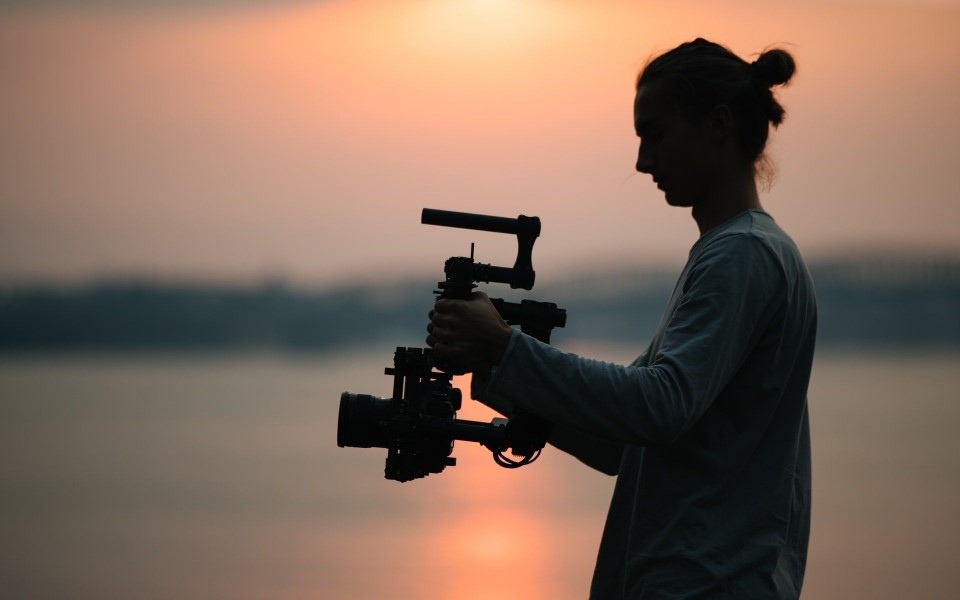
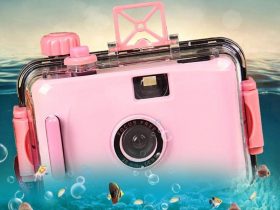




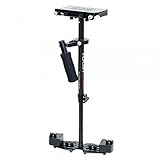







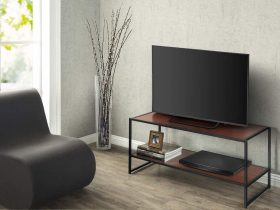

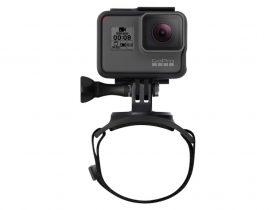
Leave a Reply